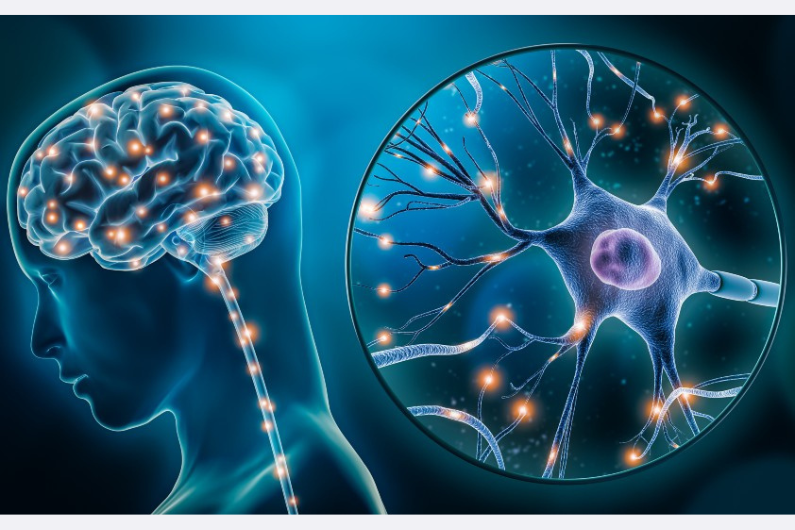Introduction:
Welcome to the world of Neurotechnology and the remarkable Focus Unit! In today’s fast-paced society, staying focused can be a real challenge, leading to decreased productivity and performance. Luckily, advancements in Neurotechnology have opened up exciting possibilities for boosting our focus and attention.
Neurotechnology is all about using our scientific knowledge of the brain and nervous system to develop innovative technologies that enhance our brain functions and overall well-being. It’s like tapping into the power of our minds to unlock new levels of concentration and productivity.
The Focus Unit is at the forefront of this revolution. It encompasses a range of techniques and devices designed to help us improve our focus and attention span. Whether it’s through specialized training programs, brain stimulation techniques, or cutting-edge gadgets, the Focus Unit offers a world of solutions for enhancing our mental capabilities.
Join us on this fascinating journey as we explore the world of Neurotechnology and the incredible potential of the Focus Unit. Get ready to discover practical strategies and exciting innovations that can revolutionize the way we stay focused in our daily lives.
What is Neurotechnology?
Neurotechnology is a fascinating field that merges neuroscience, engineering, and computer science to create tools and methods for engaging with the brain. It encompasses a variety of technologies like brain-computer interfaces (BCIs), neurofeedback, transcranial magnetic stimulation (TMS), and neurostimulation devices. The primary goal of these advanced technologies is to comprehend and influence brain activity to improve cognitive functions, including attention and focus. By leveraging these cutting-edge advancements, researchers and scientists are unlocking new possibilities to enhance our understanding of the brain and develop innovative approaches to optimize our mental capabilities.
Understanding Focus Unit:
Neurotechnology has brought about an exciting breakthrough called the Focus Unit. This remarkable wearable device uses neurofeedback techniques to enhance and improve our ability to concentrate. By carefully tracking the complex patterns of brainwaves, the device provides instant feedback, enabling us to understand and control our levels of attention more effectively. What’s great is that the Focus Unit is designed to be discreet, making it suitable for various situations like classrooms, offices, or even when studying alone. It’s an incredible tool that can truly revolutionize how we focus and perform in different settings.
How Does a Focus Unit Work?
The Focus Unit operates by employing electroencephalography (EEG) sensors to detect and measure the electrical signals generated by the brain. These sensors are completely safe and painless, allowing for everyday usage. The collected brainwave data is subsequently processed and analyzed using sophisticated algorithms that recognize patterns corresponding to various states of attention. Through an intuitive interface, the device presents visual or auditory cues to alert the wearer when their focus level diminishes or reaches optimal levels. This feedback mechanism assists individuals in honing their concentration skills by providing timely notifications and facilitating self-regulation of attention.
Neurotechnology for Focus Enhancement
Neurotechnology offers several techniques and devices that can aid in focus enhancement. These methods work by stimulating specific brain regions or training the brain to improve its attentional abilities.
Neurofeedback Training
Neurofeedback is a technique that involves transformation and regulating brain activity to enhance focus. It utilizes real-time feedback on brainwave patterns to train individuals to modify their brain activity. Through this training, individuals can learn to regulate their attention and achieve better focus. Neurofeedback has shown promising results in improving focus and attention in various populations.
Transcranial Magnetic Stimulation
A non-invasive neurotechnology technique called transcranial magnetic stimulation (TMS) uses magnetic fields to stimulate particular brain areas. TMS has been studied for its potential in enhancing focus and attention. It can modulate neuronal activity and promote neuroplasticity, leading to improvements in cognitive functions.
Brainwave Entrainment
Brainwave entrainment is a technique that uses external stimuli, such as auditory or visual signals, to synchronise brainwave patterns. By listening to specific frequencies or watching visual patterns, individuals can entrain their brainwaves to a desired state, promoting focus and attention. Brainwave entrainment can be achieved through methods like binaural beats, isochronic tones, or visual stimulation.
Wearable Neurotechnology Devices
Technology developments have resulted in the creation of wearable gadgets that can improve focus and attention. These devices typically use sensors to monitor brain activity and provide real-time feedback. They can be worn discreetly and used in various settings to improve focus. Examples include EEG headbands and smart glasses that track eye movements.
Cognitive Training Apps
In the digital age, cognitive training apps have gained popularity as a convenient way to enhance focus. These apps offer exercises and activities designed to improve attentional abilities. They often incorporate gamification elements to make the training engaging and enjoyable. Cognitive training apps can be accessed on smartphones, tablets, or computers, making them easily accessible for users.
Neurotechnology in Education and Work
Neurotechnology holds great potential for educational and workplace settings. In education, neurotechnology can help students improve their focus and attention, leading to better academic performance. In the workplace, neurotechnology can aid employees in maintaining focus during demanding tasks, increasing productivity and efficiency.
Neurotechnology and Meditation
Meditation is a practice known for its ability to improve focus and attention. Combining neurotechnology with meditation can amplify the benefits. Neurotechnology devices can provide real-time feedback on brain activity during meditation, helping individuals achieve deeper levels of focus and mindfulness.
The Future of Neurotechnology
As research and development in neurotechnology continue to progress, the future holds exciting possibilities. Advancements in brain-computer interfaces, machine learning algorithms, and neurostimulation techniques are likely to further enhance our understanding of the brain and open new avenues for focus enhancement.
Conclusion
Neurotechnology offers exciting ways to improve focus and attention. With various techniques and devices available, individuals can enhance cognitive abilities and boost productivity. Neurofeedback training, brainwave entertainment, wearable neurotechnology, and cognitive training apps are among the tools that help achieve better focus.
What’s great is that neurotechnology isn’t limited to specific settings; it benefits education and the workplace, improving learning outcomes and productivity. When combined with meditation, it becomes even more powerful, enabling deeper focus and mindfulness.
Looking ahead, advanced neurotechnology techniques and devices, like brain-computer interfaces and machine learning algorithms, will enhance our understanding of the brain and provide new ways to enhance focus.
Embracing neurotechnology unlocks our cognitive potential, helps overcome distractions, and leads to greater efficiency. It’s like having a key to maximize our brain’s abilities. Whether you’re a student or professional, neurotechnology can be a valuable tool for a fulfilling and successful life.





